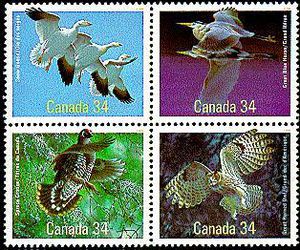An iconic but little-known Adirondack bird is dipping toward extinction in the state and likely can only be saved by bringing birds from Canada or other states to strengthen breeding. That is the conclusion of a new study on spruce grouse (Falcipennis canadensis), a bird common in Canada but much less so in New York and the Northeast. After decades of decline, there are now just 100 or fewer specimens in three Adirondack counties. At the turn of the century, the bird occupied as many as seven Adirondack counties. As recently as the 1970s, there were an estimated 300 birds, but numbers have steadily dwindled. The bird is now on the state endangered species list."We need to do something real soon, in the next few years," said John Ozard, head of wildlife diversity for the state Department of Environmental Conservation. Otherwise, odds now are 1-in-3 that spruce grouse will disappear from the Adirondacks by 2020, according to a DEC study released Friday.
Read more: http://www.timesunion.com/local/article/Adirondack-bird-nears-end-30082…
The Spruce Grouse or Canada Grouse (Falcipennis canadensis) is a medium-sized grouse closely associated with the coniferous boreal forests or taiga of North America. As a specialist of the taiga, the Spruce Grouse is found throughout Canada. In the United States it is present in Alaska, Maine, northern Michigan, northeastern Minnesota, and the mountane coniferous forests of Montana, Idaho, and Washington. Spruce Grouse are always associated with conifer-dominated forests, be it pine, spruce, or fir. The staple food is conifer needles, clipped directly from the tree, preferably the midcrown of pines though other conifers are exploited as well. In summer the birds can also forage on the ground, eating berries, green plants, fungi, and some insects. In winter, when only needles are consumed, the caeca (dead-end extensions of the intestines) increase in size to support digestion. The crop is also well developed: up to 45 cc of needles (about 10 % of body mass) can be stored in the crop at the end of the day, to be digested over the duration of the night fast. Like other birds, spruce grouse consume grit or small stones to help their gizzard break down food. Chicks under 1-week old feed on insects and other arthropods, then switch to berries and fungi until the fall, when they start feeding on needles.
Source: Wikipedia
http://en.wikipedia.org/wiki/Spruce_Grouse

- Log in to post comments
